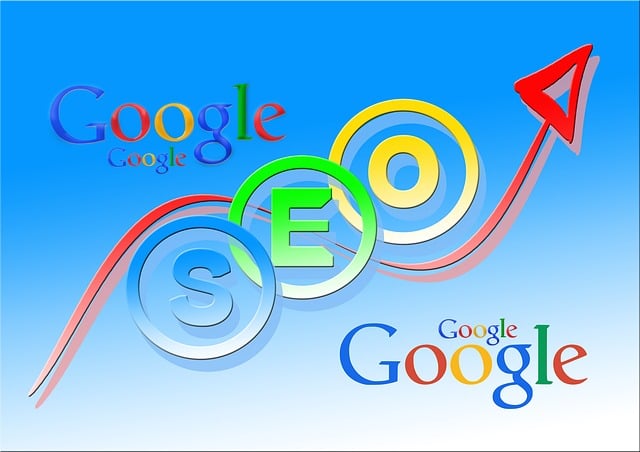Budget-Friendly SEO Training equips beginners with strategies to optimize web pages for better search rankings and organic traffic. By focusing on keyword research, unique content creation, structured headings, meta tags, and internal linking, users can enhance their website's visibility and user experience. Incorporating targeted keywords naturally, optimizing meta titles and descriptions, and tracking performance metrics are key steps for successful on-page SEO, ensuring search engines effectively index and rank web pages.
“Unleash your website’s potential with a comprehensive guide to On-Page SEO for beginners. This step-by-step tutorial covers essential strategies, from unraveling the basics of on-page optimization to mastering keyword research and content structuring. Learn how to effectively target audiences using budget-friendly SEO training techniques. Discover the power of meta tags, analyze performance, and fine-tune your site’s structure for maximum visibility. Elevate your online presence with these powerful on-page tactics.”
Understanding On-Page SEO: The Basics

On-Page SEO is a fundamental aspect of optimizing your website for search engines, and it’s an essential skill for beginners looking to enhance their online visibility. It involves optimizing individual web pages to rank higher in search results, thereby driving more organic traffic to your site. The basics revolve around understanding key elements that search engine algorithms scrutinize when crawling and indexing websites. These include relevant and unique content, well-structured headings (H1, H2, etc.), meta tags, internal linking, and optimizing images with alt text.
For beginners, implementing On-Page SEO strategies is a budget-friendly way to start their digital marketing journey. It doesn’t require significant financial investment but can yield substantial results when done right. By focusing on these technical and content optimizations, you lay a solid foundation for your website’s success, ensuring that search engines understand your pages’ purpose and relevance to users’ queries.
Key Elements of On-Page Optimization

On-Page SEO is a crucial aspect of optimizing your website for search engines, and it involves several key elements that every beginner should understand. One of the most important factors is keyword research and usage. Identifying relevant keywords related to your niche and incorporating them naturally into your content is essential. This strategy helps search engines understand your page’s context and relevance, thereby improving your rankings.
Another critical element is optimizing title tags and meta descriptions. The title tag should be descriptive and include the target keyword while keeping it concise and appealing to users. Meta descriptions provide a brief overview of the content, encouraging clicks with compelling language. Additionally, ensuring your website has quality, unique content that offers value to readers is fundamental. This includes well-structured paragraphs, relevant headings (H1, H2, etc.), and internal linking to enhance user experience and search engine comprehension.
Conducting Keyword Research for Effective Targeting

Keyword research is a fundamental step in any successful on-page SEO strategy, especially for beginners looking to get ahead with budget-friendly SEO training. It involves understanding your target audience and identifying the terms they use when searching for products or services related to your niche. Tools like Google Keyword Planner, SEMrush, or Ahrefs can help uncover search volume, competition, and related keywords. By targeting relevant keywords naturally within your content, you increase your website’s visibility in search engine results, driving more organic traffic.
Focusing on long-tail keywords—more specific and less competitive phrases—can be particularly effective for niche audiences. These keywords often reflect genuine user intent and can help establish your site as an authority in your field. Incorporating keyword research into your content strategy ensures that your website resonates with your target market, making it a valuable asset for any beginner SEO practitioner.
Optimizing Your Website's Content and Structure

Optimizing your website’s content and structure is a crucial step in enhancing its visibility on search engines, especially for those new to SEO. One of the most effective ways to start is by conducting thorough keyword research. Identify relevant keywords that your target audience uses when searching for products or services similar to yours. Incorporate these keywords naturally into your web pages’ titles, headings, meta descriptions, and content without overdoing it; a common mistake many beginners make. Remember, Budget-Friendly SEO Training emphasizes the importance of quality content that provides value to users, which in turn keeps visitors engaged and encourages them to explore more of your site.
Additionally, ensure your website has a clear and intuitive navigation structure. Organize your pages hierarchically using proper headings (H1, H2, etc.) to guide both users and search engine crawlers. Make it easy for visitors to find what they’re looking for, as bounce rates can significantly impact your search rankings. A well-structured site with relevant, optimized content will not only improve user experience but also signal to search engines that your website is reliable and worth ranking higher in search results.
Utilizing Meta Tags and Descriptions Effectively

Meta tags and descriptions are powerful tools in your budget-friendly SEO training arsenal. These HTML elements provide search engines with a snapshot of your webpage’s content, helping them understand what your page is about and why it should appear in relevant searches. Crafting effective meta titles and descriptions involves balancing keyword usage with compelling language that encourages clicks.
When optimizing these elements, focus on creating unique, concise, and persuasive meta descriptions for each page while ensuring they accurately reflect its content. Meta tags should include targeted keywords naturally, positioning them strategically within the title and description to enhance relevance without compromising readability. This simple yet effective practice can significantly impact your search engine rankings, driving more organic traffic to your site.
Tracking and Analyzing On-Page SEO Performance

Tracking and analyzing on-page SEO performance is a crucial step for beginners looking to refine their search engine optimization strategies. With budget-friendly SEO training, you can learn how to utilize various tools and metrics to gauge the effectiveness of your on-page optimizations. Start by monitoring key metrics such as click-through rates (CTRs), average position, and organic traffic volume. These insights will help you understand which elements of your content are resonating with search engines and users alike.
Regularly review website analytics reports to identify trends and areas for improvement. Look at keyword rankings, bounce rates, and time spent on page as indicators of user engagement and satisfaction. By keeping a close eye on these performance metrics, you can make data-driven adjustments to your content strategy, ensuring that your on-page SEO efforts remain aligned with the latest search engine algorithms and user preferences.
